
Issue #: 152
Published: March / April 2017
- Price per issue - digital : 5.00€Digital magazine
- Price per issue - print : 7.00€Print magazine
- Access to Multihulls World digital archives Digital archives
In the first part (see Multihulls World #151), we saw how the multihull’s exterior architecture adapted to the unstable canons of leisure sailing over the last 25 years. The interior accommodation has followed this influence and has given us – or has been inspired by – the new way of living aboard a 12 to 15-metre cruising catamaran. We have brought together a few accounts and proceeded via functional analogy to see what has changed, and to comprehend the work that the designers, the R&D departments and the builders had to complete to succeed in this.
At the end of the 80s, while nautical production was becoming industrialized on the basis of the experience of the yachting boom, two essential parameters were added to the builders’ specifications: maximum liveability, while preserving privacy, and snug comfort were now the essential criteria in the purchasers’ choice. While sailing was for the sailors, accompanying land-lubbers both male and female now had their say, and when it came to the choice, their influence could not be overlooked. The cruising catamaran manufacturers replied perfectly to these new realities, by offering a much bigger useful area than the monohulls, and above all, much greater segmentation of the living areas, with well-isolated cabins in each hull. The builders applied themselves to selecting soft materials and woodwork in warm shades, providing a cozy, reassuring atmosphere, as being safe and resisting the elements are feelings which are well-rooted in our mentalities. Moreover the view of the exterior, while favored by the position of the nacelle, was still only partial when standing, and often blocked once in the sitting position. The shape of the coachroofs and the arrangement of the berths showed again the need to protect oneself from the sea and the wind, only confirmed by the size of the portlights and portholes. The long tunnel of the hulls accommodated, after a fashion, berths, sanitation and stowage, sometimes with no bulkheads on smaller boats, and the galley was more often than not reduced to what was current in the caravan world. But this was to change very quickly, as the incredible domestic potential had been clearly identified.
30 years separate the Louisiane from the Lucia More than a development, the catamaran world has undergone a revolution!
From the beginning of the 90s onwards, the development of navigation equipment as well as the boom in the charter market, attracted more novice consumers. Charter opened up sailing to new users, who wouldn’t have been attracted to it if catamarans hadn’t been put at their disposal, Emmanuel Allot pointed out. Associated with tax-exemption arrangements, this new group gave wings to the architects and builders, who applied themselves to improving the product; this was the multihull boom in leisure sailing. The rationalization of the accommodation, the positioning of the equipment to optimize the sailing maneuvers, the comfort and the ease of life aboard became crucial assets to attract the clientele. In concrete terms, the portholes turned into genuine streamlined windows, the cockpit doors were glazed and sliding. The saloons became much more convivial, with settees more on a level. The galleys were systematically fitted with equipment such as ovens and high-performance cold storage compartments. On the bigger boats, we witnessed the marine adaptation of equipment which until then had been unusual on our boats, such as washing machines and dishwashers. The berths became beds occupying the whole width, the bathrooms were isolated by genuine doors, and compartmentalized forepeaks appeared. And everything was fine like that, to satisfy the builders and users at that time, Marc Van Peteghem confirmed.
Visibility has developed over three decades, between the Catana 40 and the Lucia 40…
During this decade, the fantastic saga of the ocean racing multihulls caused the production catamaran to take off - boosted by holidaymakers eager for the tropical pleasures recently brought within everyone’s reach, and by circumnavigators who were no longer content with the laid-back boats of the South Seas. Production adapted little by little to the new requirements of the leisure sailor, who was now demanding high performance and luxury. Because the demand had changed. While a certain tolerance, to take into account good nautical common sense, was still essential, the beginning of the 21st century saw new demands from the clientele, and even resistance concerning certain points. So in 2000, a sailing boat should no longer take in water! Neither via the hull, nor via the deck. One had to be able to have a shower without worrying about spraying water everywhere. The galley had to be well-equipped, as the hunt for unpleasant smells and air conditioning had spread to the water, and air conditioning was present on smaller and smaller boats. In a word, high-tech finishing and optimum equipment were now the passports to cruising. Thus we saw the portlights on our catamarans become vertical, allowing visibility to be clearly improved, and at the same time increasing the area of the saloon, as the settee backrests were now at the same level. The opening to the cockpit became bigger, replaced by a double sliding glass door, and the galley (now equipped with an extractor hood), which was often confined to the space between two cabins on a 40-footer, now sat between the saloon and the cockpit, thanks to the space saved. On the biggest boats, it took on the additional function of an in-line galley-bar serving the saloon and the cockpit. It must be said that the clientele was slowly becoming international, and started to extend to the Middle-East, Asia and the Americas.
Also, ‘per cabin’ charter with a skipper was developing among novices, for whom nautical overcrowding was unknown. While previously they would have shared one bathroom, a 12-meter boat was now equipped with four independent cabins, each with a private bathroom. And once the size allowed, separate shower cubicles appeared, often in the owner’s suites, which occupied a whole hull. These boats became energy-guzzling, as hotel-style comfort had become essential for having a good holiday. Generators, watermakers, large battery banks burgeoned at a brisk pace. Of course all this had a common denominator, the weight. So to partially remedy this sedentary obesity, the builders didn’t hesitate to call on lightweight, high-tech materials, and the marketing brochures were full of words such as Kevlar, carbon and epoxy, well-known in the ocean racing world, and others coming from luxury leisure sailing, such as veneer and Triplex glass. Sandwich construction became more and more sophisticated for both structures and accommodation.
Visibility has developed over three decades, between the Catana 40 and the Lucia 40…
Then, toward the end of the 2000s, everything accelerated. Luxury leisure sailing had had an influence. For a one-off, the boat is built around the accommodation, according to Jean-Jacques Coste. Following the financial crisis of 2008, the wishes of a clientele which was becoming rarer and disparate influenced production. In China, 50% of sailing boats sold are catamarans, Bruno Belmont told us, and the particularity of these emerging countries is that they have no preconceptions, added Jean-François Fontaine. For Catherine Relandeau, the motor yacht, more advanced in terms of comfort, is increasingly the benchmark. People who charter a cabin don’t want to hear any talk about water restrictions. For others, the catamaran is becoming a leisure platform on the water, with a comfort level comparable to that of a suite in a luxury hotel. As for long-term cruisers, ocean voyaging is changing, we can remain connected with land in the same way as at home. No more sacrifices to comfort are envisaged. The owners have large beds at home, so why do without aboard the boat! And the builders are adapting. Limits on water or energy are no longer even conceivable. Watermakers, air conditioning and generators have become the standard. So you no longer hit your head, headroom is around two meters everywhere, the beds in the owner’s cabins have become king size, and the galleys are systematically equipped with a dishwasher, microwave oven, espresso machine and even garbage sorting facilities. The shower cubicles are separate from the bathroom, and the washing machine is also a dryer.
Observing a catamaran from the 90s, and its current counterpart, the development is striking. We could even talk about a revolution! The increase in size of the forward and aft cockpits, the sugar scoops and the flybridges allows numerous new living areas to be offered, as does the increase in the beam of the hulls (from 1.7m to 2.5m on a 42-footer) or the freeboard (around 25 cm in 25 years, and the same for the coachroof) or characteristics such as the width of the coachroof, their rectangular rather than semi-circular shape, and their more vertical uprights, or again, the increase in the area of the saloon’s glazing (from 8m² to 11m² on a 55-footer).
With the developments, the living areas have changed completely, and today offer saloon-cockpit areas in one block…
But all these increasing dimensions don’t explain everything. The builders have understood that they have to offer volume and space in a boat which will sail round the world comfortably, easily, quickly and safely, but also...pleasantly. So another factor comes into play, the interior design. The ergonomics and the multiplicity of the areas count for as much, and favor both well-being aboard and privacy, while improving rest time. Now, every movement, every moment, position or situation is studied, we are told by the designers, who have become the specialists in interior organization. And the progress is undeniable; every square centimeter is used, to provide height, position a piece of furniture or a locker, or even a dressing table. Each perspective is calculated to make movement more fluid, and the saloon plays the role of a theater stage, allocating the bedrooms as well as the forward and aft balconies, with its visibility improved still further by the absence of blind spots. Stowage has also undergone a revolution, Franck Darnet pointed out. You no longer have to get down on all fours and empty all the contents of the locker under the settees to find the desired object (inevitably at the bottom!), you simply pull out a drawer, just like that of a chest of drawers. You no longer have to put on your headlamp and go caving in the cool box to find the butter, you just open the door of a real refrigerator. To get up, you set foot on the floor beside the bed, and a small desk houses the laptop and phone, for dealing with everyday matters. Then the connoisseur that the cruiser has become is congratulated, the interior decoration emphasizes refined areas and bright interiors made possible by the enlargement of the hull portlights. The high-tech woodwork in light-colored veneers replaces the traditional mahogany and teak.
The work surface area in the galleys has increased from 0.5m² to 1.5m² in a few years. And the equipment allows meals worthy of starred restaurants to be prepared.
As for the cockpits, they are equipped with integrated cold storage, sink and barbecue. The cordon bleu chefs are not forgotten - a genuine L-shaped 1.5m² work surface is the minimum required on a 40-footer. As for the equipment, nothing is lacking - the small nautical oven has been replaced by one just like at home, which heats to 300°; sometimes a steam oven allows you to follow good culinary practices. Finally, there is no longer any need to go ashore for the internet, all you have to do is remain aboard, as multimedia has arrived, and home cinema is delivered all over the boat. And all this with the possibility of.planing in certain wind conditions and points of sail, as active comfort is just as favored as passive comfort. We have to admit that the movements are much smoother than previously. The proof, with this anecdote from our chief editor: while drinking an aperitif, with the boat planing at nearly 20 knots, going to quickly take in a reef was not enough to spill the drink he had abandoned on the chart table.
Maximum performance, easy to handle and above all the accommodation of an urban apartment with a sea view have become the minimum for any new purchaser. And as each purchaser is different, the choices of interior accommodation possibilities have become numerous. Thus the ingenuity of the designers allows up to five or six versions to be offered as standard, to adapt to each case – a kind of made-to-measure boat. Tomorrow’s challenge, apart from making the energy consumption more environmentally friendly, will be to build good sailing boats which are faster, smoother, whilst having good interior volumes and being even easier to sail. Foils which can relieve the weight and smooth the passage through the waves is one path, according to Marc van Peteghem. Nigel Irens is counting on length to combine speed and comfort, and for sail handling, the push-button generation seems inevitable in the near future. We will be following this fascinating challenge...
The work surface area in the galleys has increased from 0.5m² to 1.5m² in a few years. And the equipment allows meals worthy of starred restaurants to be prepared.

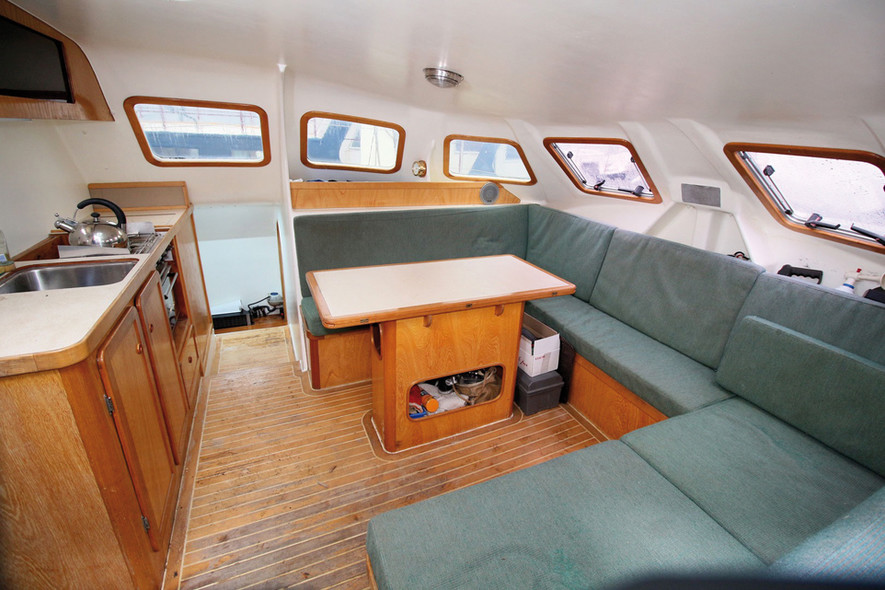
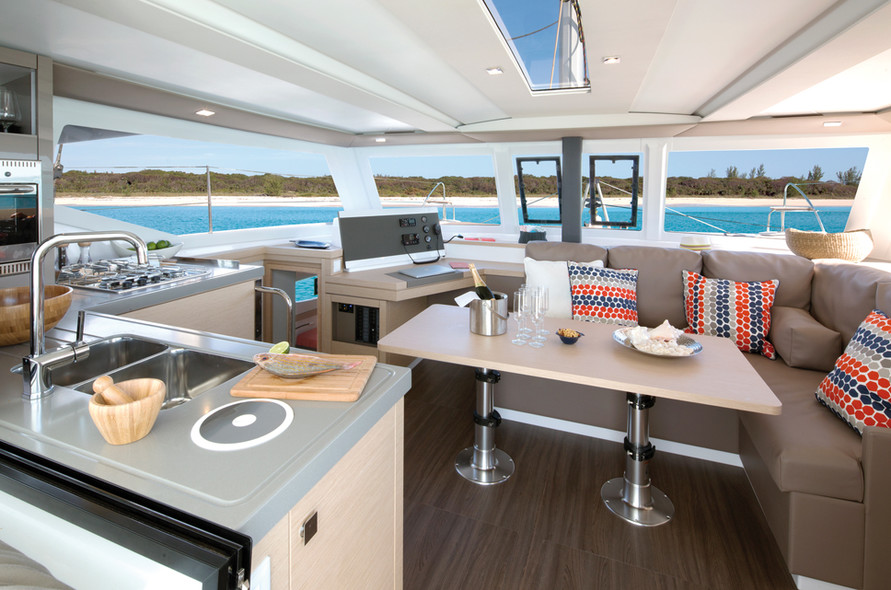
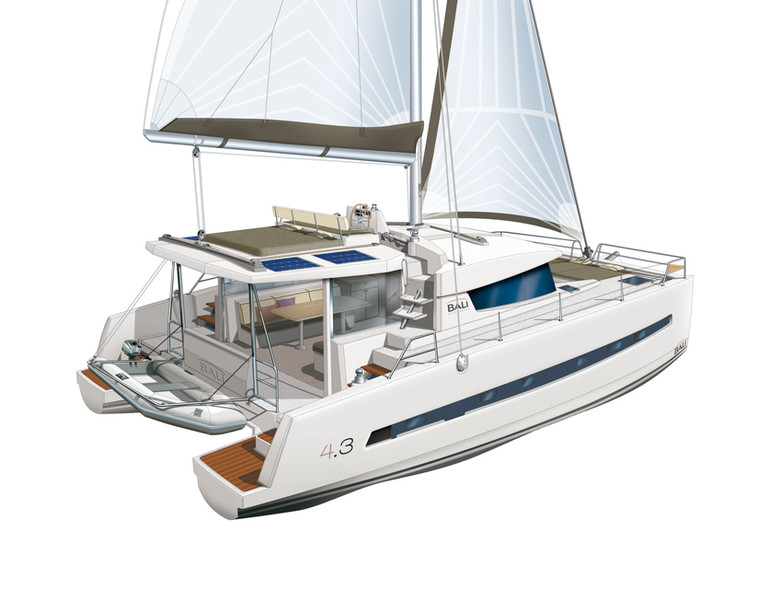
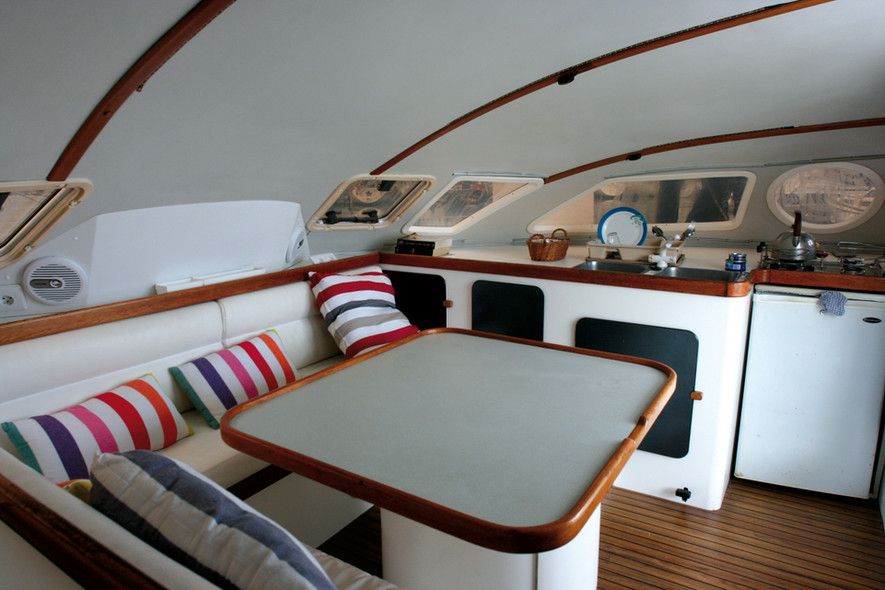
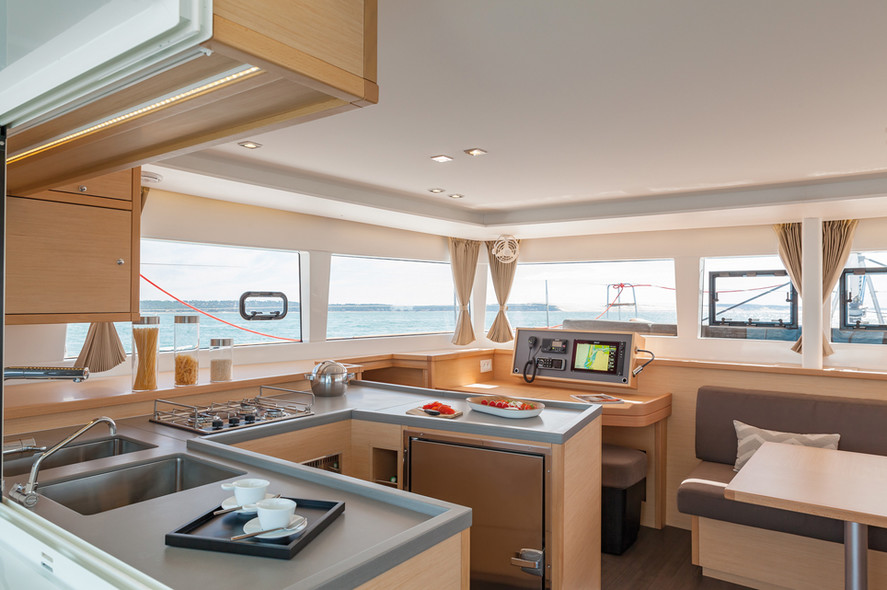
What readers think
Post a comment
No comments to show.